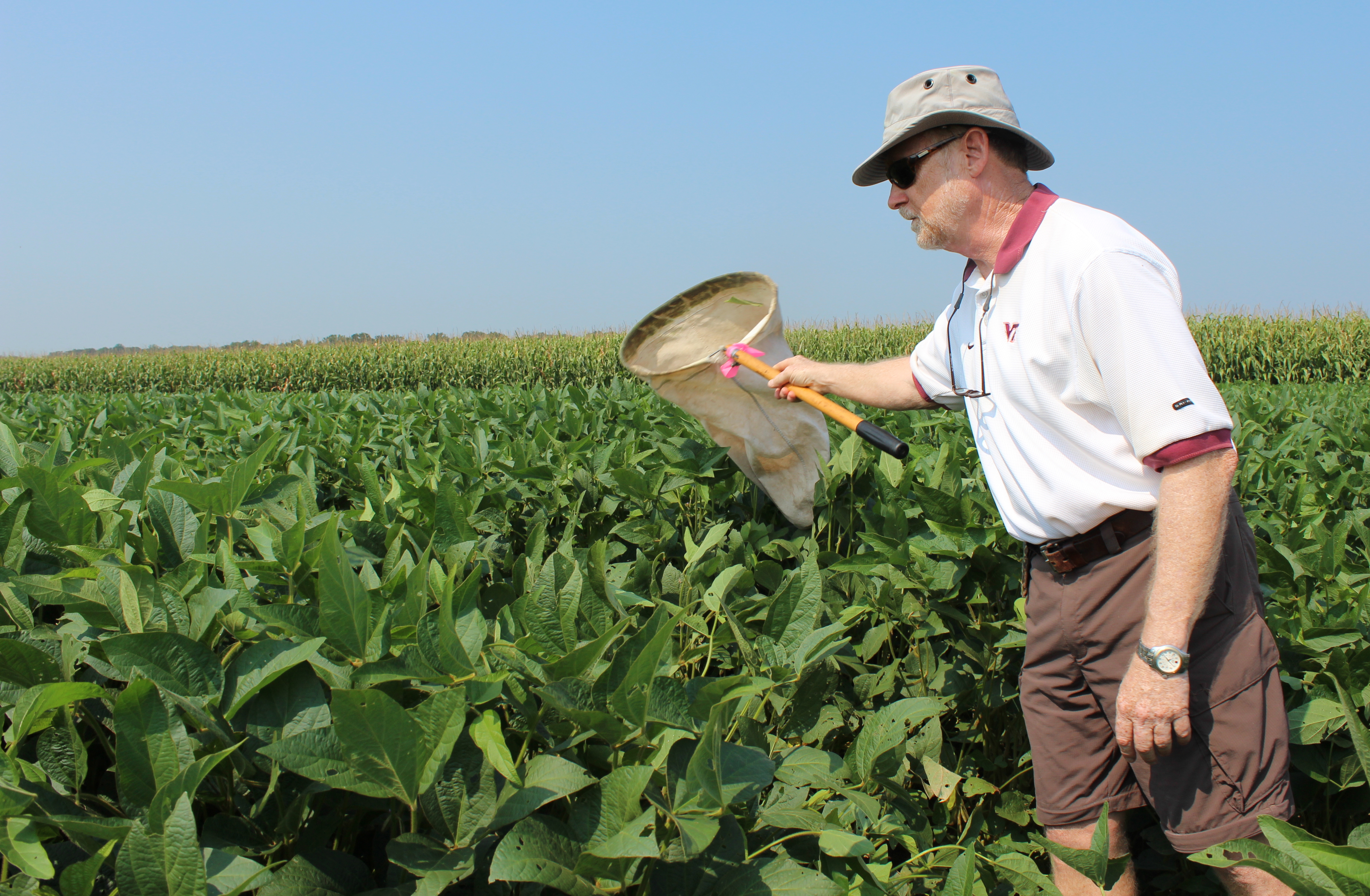Infestation of stink bugs continues to spread across state

In the 12 years since brown marmorated stink bugs were discovered in Allentown, Pa., the voracious insect has made a slow and steady march toward Virginia. Since it was found in the state in 2004, it has caused millions of dollars in damage as it destroyed apples and grapes in the Shenandoah Valley, pierced soybeans in north-central fields, and sucked the proteins and carbohydrates out of corn, tomato, green bean, and pepper plants in other areas of Virginia.
This year, stink bugs have been discovered in 20 counties in Virginia and they are expected to continue to spread throughout the state, infecting more localities than ever before.
A team of Virginia Tech researchers is working across the commonwealth to not only find a way to control the stink bug, but to keep it from spreading farther around Virginia and to other southern states, where it could continue its damaging rampage.
“It’s not pretty,” said Ames Herbert, professor of entomology in the College of Agriculture and Life Sciences at Virginia Tech, as he walked along soybean plants at the Tidewater Agricultural Research and Extension Center in Suffolk. Though stink bugs haven’t been discovered in that region yet, if they do take hold there in years to come, it could be a big problem.
“If they can make it to coastal Virginia, they can make it anywhere in the Eastern United States,” said Herbert, a Virginia Cooperative Extension entomologist.
The stink bug’s appetite is as varied as it is voracious.
“This is the one insect that has been all-encompassing in the sheer variety of plants it attacks,” said Virginia Tech Associate Professor Tom Kuhar, an Extension entomologist. “We have very few agricultural commodities that this bug does not attack.”
Virginia Tech researchers and Extension agents are working with farmers and scientists around the Mid-Atlantic states to monitor the spread of stink bugs and share ideas on how to minimize their damage.
“We are putting lots of resources into going deeper into this and trying to learn how to manage this pest,” Herbert said.
At the Alson H. Smith Jr. Agricultural Research and Extension Center in Winchester, Professor Chris Bergh, Extension entomologist, along with postdoctoral associate Shimat V. Joseph and Angelita Acebes of the Philippines, a Ph.D. entomology student in the College of Agriculture and Life Sciences, are researching the stink bug’s biology and pest management in tree fruit.
In Blacksburg, Kuhar, postdoctoral associate Katherine Kamminga and graduate student John Aigner of Locustville, Va., who is a graduate entomology student, are studying aspects of the stink bug’s biology and ecology, its insecticide efficacy, and sustainable practices for managing it in vegetable crops. According to Kuhar, as much as 20 percent of the vegetable crops in Northern Virginia were lost to stink bugs in 2010.
Also in Blacksburg, entomology professor and Extension specialist Doug Pfeiffer and Sanjay Basnet of Nepal, who is a graduate entomology student, are researching the impact and management of stink bugs on wine grapes and berries.
Extension specialist and entomology Professor Rod Youngman is also assessing the impact of the bug on field corn.
The challenges with stink bugs are many. They pierce a plant’s seed in order to inject enzymes and suck out the juices — a process that can damage the fruit and seed beyond use. The piercing also leaves the plant susceptible to diseases that can damage or kill it.
On top of that, there are so many stink bugs when they infest an area that it can take multiple pesticide applications to kill the bugs, driving up overhead costs for farmers.
There can be hundreds of thousands of the bugs in one field alone.
Herbert is researching exactly how much pesticide needs to be used on a soybean field to gain control. This year, he is testing the theory that only the perimeters of fields need to be sprayed because stink bug infestation seems to be heaviest there. This would greatly reduce the amount of pesticide a farmer has to use. So far, it is working on most crops, but some farmers are seeing infestations deeper in the fields.
One of Herbert’s graduate students helped a U.S. Department of Agriculture research scientist examine the potential of importing one of the stink bug’s natural predators from its native China, but that work will likely take years before the biological control option could be available.
Herbert also has a team of researchers fanned out across the state, sweeping soybean fields with nets to determine how far the infestation spreads from year to year.
Kuhar is also studying what habitat attracts stink bugs.
It seems they like invasive trees from China, such as the ailanthus and paulownia. If farmers can reduce those kinds of trees along the edge of their crops, they may be able to reduce the damage from stink bugs, he explained.
“You have to assume they are in your trees if they are in your crops,” Kuhar said. “What we need to do is monitor farms to know who is at risk.”








